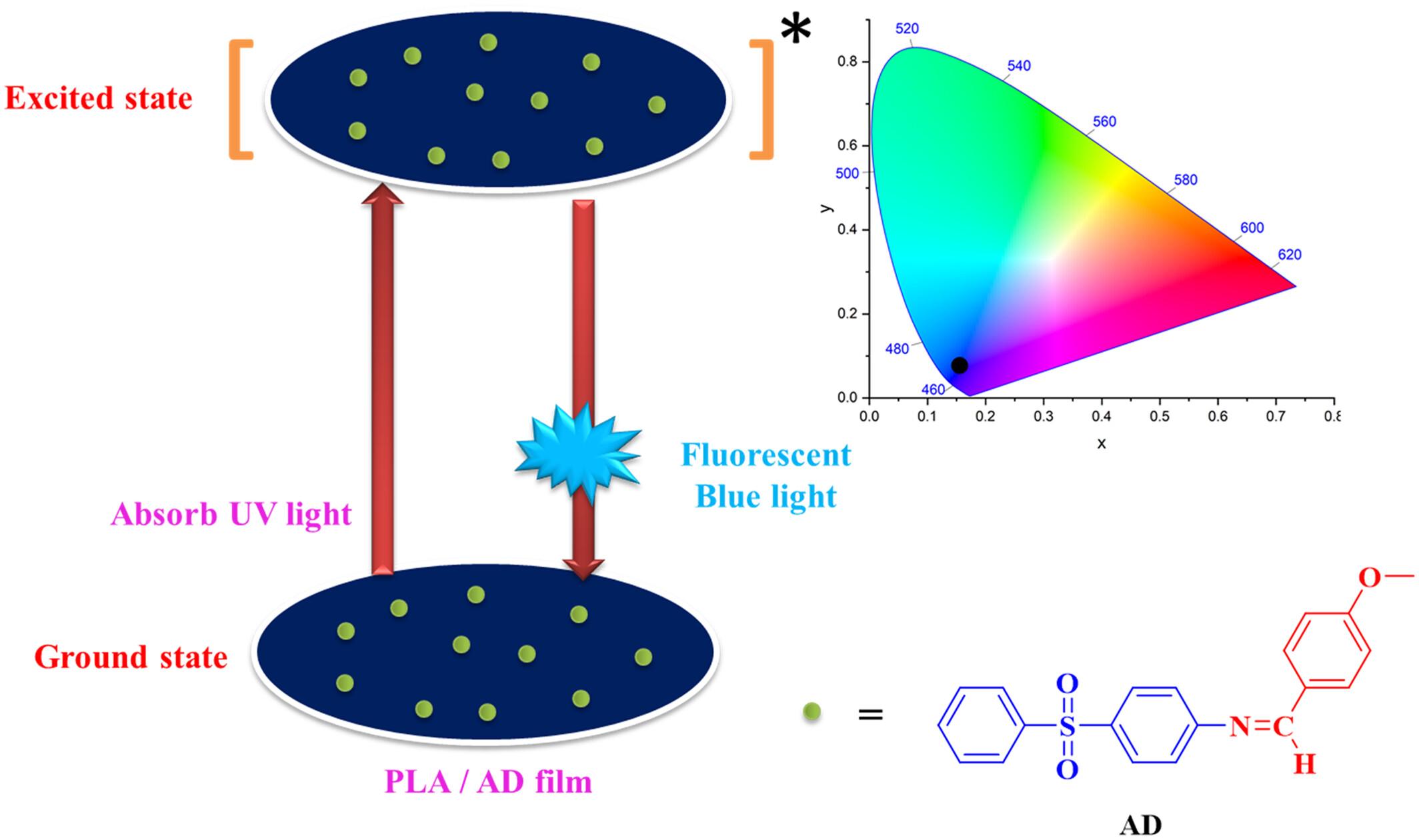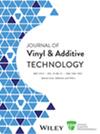Synthesis of a new Schiff base acceptor–donor molecule as a UV stabilizer for enhanced poly(lactic acid) (PLA) photoprotection
Abstract
Poly(lactic acid) (PLA) is a biodegradable aliphatic polyester of significant interest. Owing to its traits, PLA stands out as one of the most widely used polymers in various fields. Nevertheless, environmental conditions, such as heat, UV light, and humidity have negative impacts on the polymer's performance as a result of the accelerating aging process. In this study, we present a novel acceptor–donor (AD) Schiff base molecule that demonstrates significant UV stabilization when incorporated into the polymer's matrix. The stabilization effect of the AD molecule was studied by using the weight loss method and tracking the functional group indices of CO (ICO) and OH (IOH) that emerge because of polymer degradation after irradiation with UV light for 300 h. The films' structures were studied by scanning electronic microscopy (SEM), atomic force microscope (AFM), and energy-dispersive x-ray spectroscopy (EDX) to evaluate the stabilization enhancement of AD moiety. The results exhibit a significant decrease in weight loss for blended PLA, in contrast to blank PLA. The weight loss percentage reduced from 2.5 for blank PLA to less than 0.7 for blended PLA. Furthermore, ICO and IOH indices witness a remarkable reduction which verifies the improved photodegradation resulting from AD moiety. The suggested method involves the efficient absorption of UV radiation produced during photo-degradation by the AD molecule, which then emits this light as visible blue light without causing any damage to PLA film's chemical structure. Our results demonstrate the adaptability of AD molecules as PLA photo-stabilizers and point to their wider significance for sustainable material applications. This work advances the stability of PLA films and provides opportunities for the creation of novel stabilization techniques based on organic electrical principles. Future studies may examine the multipurpose uses of the AD molecule in sensor materials and other contexts.
Highlights
- Presenting a novel acceptor–donor Schiff base as a phot stabilizer of PLA.
- Using the weight loss method and tracking the functional group indices to test the degradation.
- A significant decrease in weight loss for blended PLA, in contrast to blank PLA.
- The Schiff base absorbing UV light, excited electrons from ground state to excited state.
- They return to the ground state and produce bright blue light.
- These movement of electrons cause no damage to the PLA polymer chains.



 求助内容:
求助内容: 应助结果提醒方式:
应助结果提醒方式:


